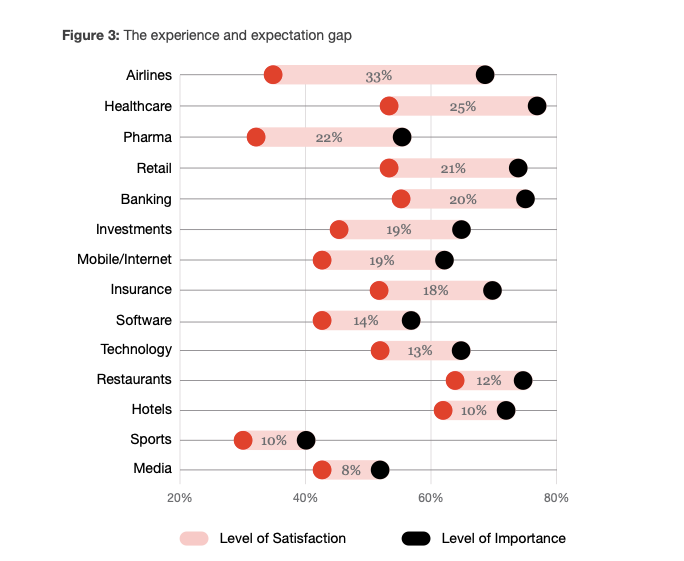2020 Defining Trends That Will Shape Customer-Centric Brand Experiences
It’s never been more pertinent for brands to invest in seamless customer-centric experiences that maximize speed, efficiency and reduce friction in the customer journey. To be a customer-centric organization requires a lot of commitment and consistency. Good customer initiatives implemented for a short duration will only have limited impact on the customer’s mind. A large PWC report says that nearly 80% of American customers are willing to pay a premium for efficiency, convenience, friendly service.

For long term brand success, it is vital to define both short and long term milestones to meet organizational business goals. While it’s a long journey to become a customer-centric organization and to champion brand experiences, some areas will continue to define customer journeys. Few important spaces like tech, personalization and employees seem to be the defining pillars of 2020 for further progress of a customer-centric brand.
Immersive Experiences Enabled By Tech
Immersive experiences build customers confidence and help them make more informed decisions. While a lot is yet to be accomplished by the majority of brands, a few brands are already championing the use of 3D and animations to give a unique experience to the customers.
Sephora, the multinational personal care and beauty brand store from France, started a digital app which lets its customers try products online. Augmented reality enabled digital app Sephora Virtual assist, lets customers try lip, cheek and eye makeup products to select the one best suited for them. The app uses customer’s photo uploaded by them to show them how different makeup patterns and colors will look on their face after application. The convenience of not visiting a physical store coupled with confident choices has made the app very attractive to customers.
Further emergence of artificial intelligence with augmented reality is opening up new dimensions for brands to explore unknown zones and reduce the distance between the physical and digital world. Another interesting example of creating interactive experiences for customers with art is from San Francisco’s museum, which let people slip inside Magritte’s Surreal Scenes [2].
Therefore, to deliver truly immersive experiences, brands will need to focus on creating multisensory and multidimensional experiences to leave a lasting imprint on the customer’s mind.
Personalization
The most important word to deliver a customer-centric experience is personalization, and it starts from a holistic understanding of customers. A single view of the customer (SVOC) lends a thorough understanding of the customers, including being aware of all customer data points, transactions, sales, after-sales, grievances, online feedback, ad responses etc. Brands can build on information assessed through SVOC, advertising platforms and subsequently cater to specific needs and preferences of the customers. Thus delivering completely personalized experiences to enhance brand resonance.
A growing interest in personalized content on brand websites or ad communication besides personalized products and services is the new age customer delight. Customers want customized interactions, at a specific time of the day, on certain platforms, where they want to engage with a brand message. When these preferences are built into the customer journey, a powerful personalized experience can be delivered. Brand need to develop customer journeys which have been rooted in the voice of the customer.
TGIF, a well-known food and beverage restaurant chain, has an interesting example of personalization. TGIF introduced an AI app “Flanagan” [3], which acts as a virtual bartender for the customers and recommends a drink for them based on their mood and facial expressions. Flanagan is a bit hit with customers and provides a new and innovative solution to engage customers. In the long run, these unique customer experiences will connect customers with the brands, increase brand loyalty and provide an opportunity to charge a price premium.
Delivering Excellence By Empowering Employees
While it is important to gather every possible data point on the customers, deriving actionable insights from this data pool is equally important. This leads organizations to the last pillar, ‘employees’, to deliver customer-centric brand experiences. Employees can close the experience gap, but sadly enough, the critical role employees’ play in customer experience is usually forgotten. Powered with the aid of personalized customer information, employees can create memorable moments for customers.
Employees may also be the source of new business opportunities, which will also keep them motivated and invested in the organization. Google encourages its employees to invest 20% of their time in new projects [4]. Google maps and Gmail are successful Google products, which were born out of this 20% initiative. Employees are the cornerstone for success in the customer-centric journey of any brand. Organizations with engaged employees outperform their competitors by 147% [5].

Different industries have different expectations, the graph above demonstrates the gap between the level of satisfaction and level of experience. This gap can be reduced only through a well-trained, engaged and empowered staff.
Conclusively, 2020 looks brighter with new innovations and exciting engagements from the brands to look forward to. Even though the rush of tech 5G, AI/AR etc. can be overwhelming; brand should continue to focus on experiences and investment that make the customer journey more efficient, faster and convenient.





